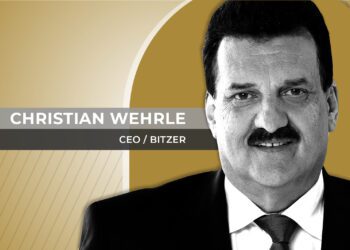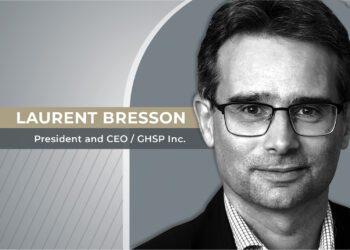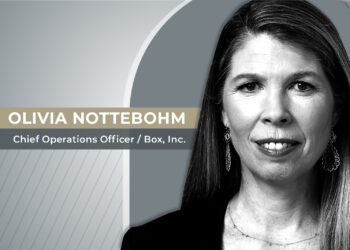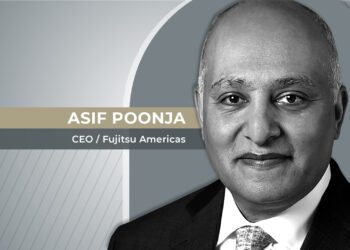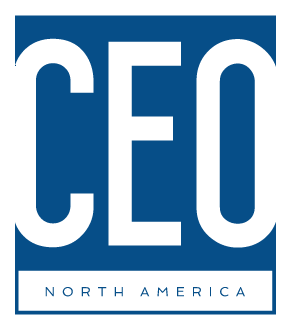The president of Acuity Technology Group at Acuity Brands, Laurent Vernerey, sees both challenges and opportunities ahead.
When Laurent Vernerey was appointed Executive Vice President of lighting manufacturer Acuity Brands, Inc. and president of the Acuity Technology Group in 2017, he was greatly impressed by the technology team assembled by CEO Vernon J. Nagel.
The team included talent from CISCO and other leading companies, who were eager to further drive the ongoing digital revolution at the company. “The excitement around the disruption in the industry driven by technology is what really caught my attention,” Vernerey, who previously served as President and CEO of Schneider Electric’s North American Operations, told CEO Magazine of his desire to take on the role.
Acuity Brands, Inc. is the North American market leader and one of the world’s leading providers of lighting and building management solutions for commercial, institutional, industrial, infrastructure and residential applications.
With FY2018 net sales of $3.7 billion, the company currently employs over 13,000 associates and is headquartered in Atlanta, Georgia, with operations throughout North America, as well as in Europe and Asia.
Acuity’s lighting and building management solutions (BMS) vary from individual devices to intelligent network systems. Individual devices they produce include intelligent luminaires, lighting controls, lighting components, controllers for various building systems (including HVAC, lighting, shades and access control), power supplies and prismatic skylights.
The company also offers intelligent network systems that optimize energy efficiency and comfort and enhance the occupant experience for various indoor and outdoor applications, while also reducing operating costs.
Acuity Brands provides customers with end-to-end solutions leveraging the BMS or intelligent LED luminaire platforms to power an IoT-enabled network, which is funded by energy savings throughout a connected building.


Embracing the future
According to Vernerey, since he joined Acuity Brands last year, the company has been deep in the midst of expanding its solutions portfolio. The resulting view provides a host of economic benefits that have resulted from data analytics, enabled by IoT and supported by the advancement of smart buildings, smart cities and the smart grid.
Laurent views all these advancements as exciting new directions for the lighting business.
“What I really want to do is find a way to differentiate us in the marketplace, and right now, that’s by embedding technology,” Vernerey explained. “Instead of things starting with ‘I’m going to sell you light,’ almost like a cost in the make-up of your building, I’m actually going to help you turn your connected building into a strategic asset.
“Instead of things starting with ‘I’m going to sell you light,’ almost like a cost in the make-up of your building, I’m actually going to help you turn your connected building into a strategic asset,” Vernerey said of the opportunities sweeping the industry as a result of technological disruption.
“Today, you have much more information available and it’s the mix of the technology model, access to customers, and a business model that makes Acuity Brands uniquely positioned to capture those opportunities.”
Smart lighting is a great example of how the industry is currently being transformed and forcing the likes of Acuity Brands to look for increasingly inventive solutions to satisfy the market.
The goal of smart lighting is to obtain greater energy efficiency by allowing the occupants of a building to remotely control cooling and heating, lighting, spaces, and the control of building systems. The concept also involves utilizing natural light from the sun to reduce the use of man-made lighting, which incorporates sunblind control.
Acuity Brands has responded to this market opportunity by not only delivering improved energy efficiency through LED lighting, lighting controls and BMS controls, but by integrating all of these technologies into a sensory network.
The sensory network maps indoor spaces through intelligent lighting or BMS systems, capturing data that is aggregated in the cloud to deliver improved building and business performance to tenants who occupy those building spaces. One example of this innovative approach is to add technology to the luminaires and networked controls.
This transforms the lights into a data ingestion and delivery device, which yield precise indoor location of people and assets within the building. Businesses can then use that data to provide asset tracking software and personal navigation on mobile apps or improve occupant experiences within office or educational spaces.
“We continue to outgrow the market and I believe we will really be ahead of the game in driving the technology play,” Vernerey insisted. “Smart lighting represents another opportunity to continue on that growth plan and ensure that lighting remains a strategic asset.”
A leaner business system
Technology is likewise being employed in the manufacturing of the products that Acuity Brands is renowned for historically, with a view to minimizing waste and maximizing value added without sacrificing productivity.
To this end, the LEAN manufacturing model is managing the business process.
“Acuity practices the discipline of LEAN, and not just LEAN manufacturing, but a fully-edged business system,” Vernerey explained. “Coming into the company and finding such a discipline and well-established process in place means we can continue to improve. We don’t just have the people but also the processes in place that will lead us to success.”
Vernerey strongly emphasizes strategic partners and supply chain as the first two elements of collaboration. Strategic partnerships are key to Acuity Brands’ current success, which provides the company with an advantage in terms of flexibility.
He says he views these relationships as especially important when it comes to resolving supply chain issues, either through co-designed strategies or the ability to hit upon alternative supply solutions quickly and efficiently in moments of crisis.
“Ultimately, we have a reputation, brand and a delivery network that is second to none. Our supply chain operates smoothly in the background, which is supporting all of this,” Vernerey stated. “It’s an ecosystem. It requires a mix of large companies, small companies and startups. The second thing is that technology alone is not enough. You have to be able to master the deployment of scale. The third is that culture trumps strategy every day of the week. If you don’t have a culture within your organization that drives continuous improvement, you don’t have the full recipe to succeed.”



